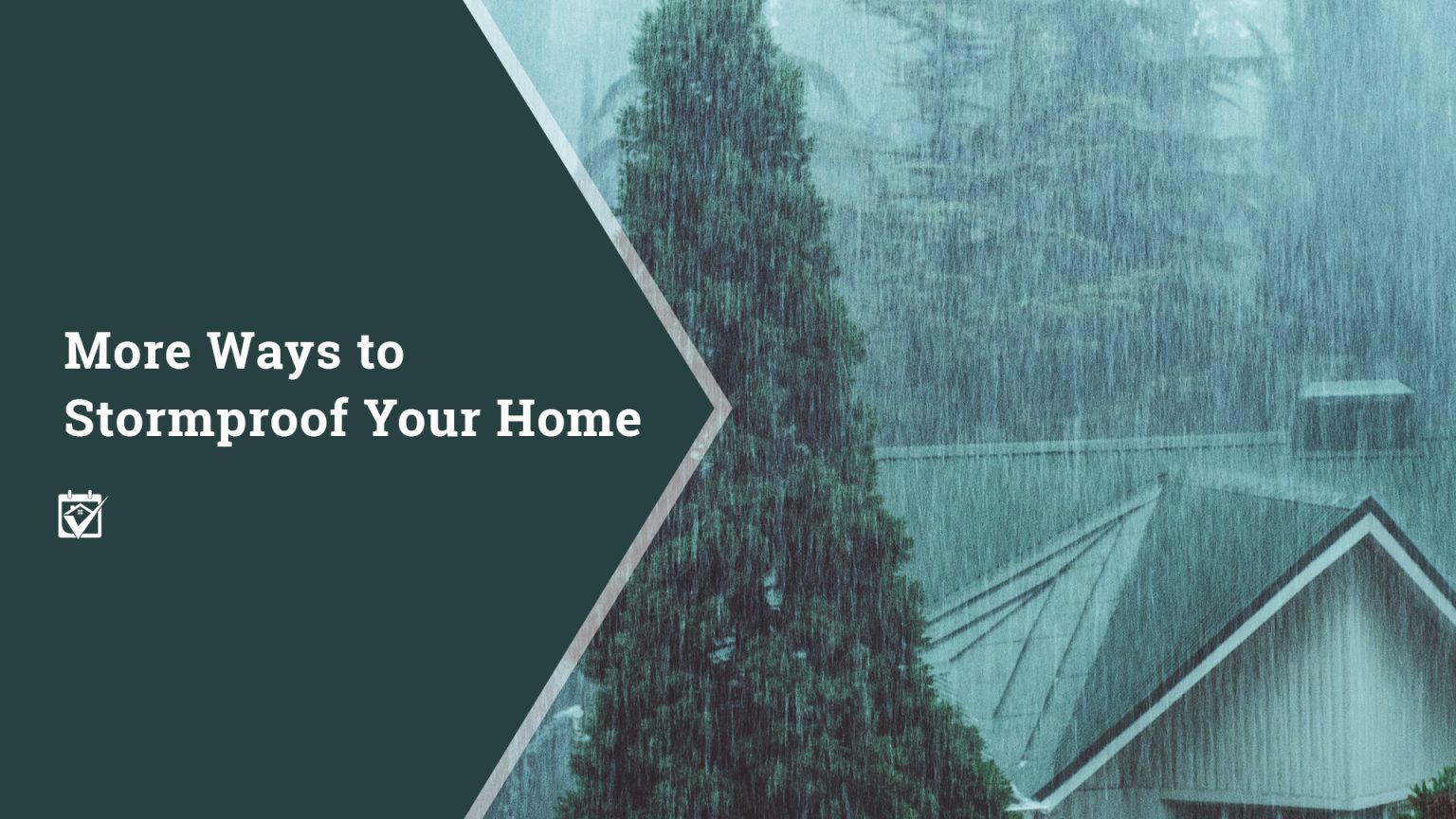
As spring turns to summer, one thing that unfortunately comes along with that change is summer storms. For some people this means frequent downpours or heavy rains. For others it means lightning or the possibility of severe weather. Even for those who don’t live in areas that commonly experience tornadoes or other severe weather, there is still a possibility of damage from things like flooding and high winds. Whether storms are a common occurrence where you live or only infrequent, keeping your home safe during bad weather should still be a concern.
You’ve likely already seen suggestions for how to stormproof your home and stay safe during inclement weather. To make sure that you’ve covered all the bases, here are a few additional ways to stormproof your home that you might not have thought of.
Stormproofing Your Property
There are a few changes that you can make to your property that may significantly reduce the likelihood of storm-related damage to your home. One big thing that you can do is inspect any trees on your property before storm season, and again in the fall to make sure that there aren’t any dead or damaged limbs that could break under pressure. Getting these removed will not only make your trees look better, but will also help protect against home damage or injury from falling limbs.
If your home is on a downward slope or located in a low area, you might also consider installing French drains to reroute water away from your foundation. This can be very effective in preventing damage from flooded basements and garages, as the drains will keep a lot of that water from actually reaching your home. Depending on how the French drains are set up and where they drain to, this can move a significant amount of water away from your home during a storm.
Upgrading Your Defenses
If you’re considering home improvements, there are a few options you might consider. If thunderstorms are common where you live during the summer, installing a lightning rod or other lighting protection components can be a good idea. You also might want to get transient voltage surge suppressors to plug high-value electronics such as computers and televisions into as well, since these help to limit voltage to 1.5 times the normal voltage range. While this is still higher voltage than these devices are used to, they are much more likely to survive without damage compared to the significant amount of voltage they might experience during a lightning strike surge.
Other improvements you can make to better protect you during a storm include installing new windows and a new roof. Advances in window and roof materials make them much more durable than they were even a decade ago, and if your windows and roof have been in place for a long time, then they might already be experiencing some wear and tear. Not only will replacing them before the weather gets bad help to prevent leaks and other storm-related problems, but in the event of a big storm, you may even have an installation warranty on your side.
Review Your Policies
One last thing that you might want to do is look over your homeowner’s insurance and any other insurance policies you have for your property to see exactly what is and isn’t covered regarding storm damage. Flood damage commonly isn’t covered by standard policies, and depending on where you live there may be other storm-related exclusions as well. You definitely don’t want to wind up surprised at your coverage level if you have to make a storm-related claim.

 Facebook
Facebook
 X
X
 Pinterest
Pinterest
 Copy Link
Copy Link


